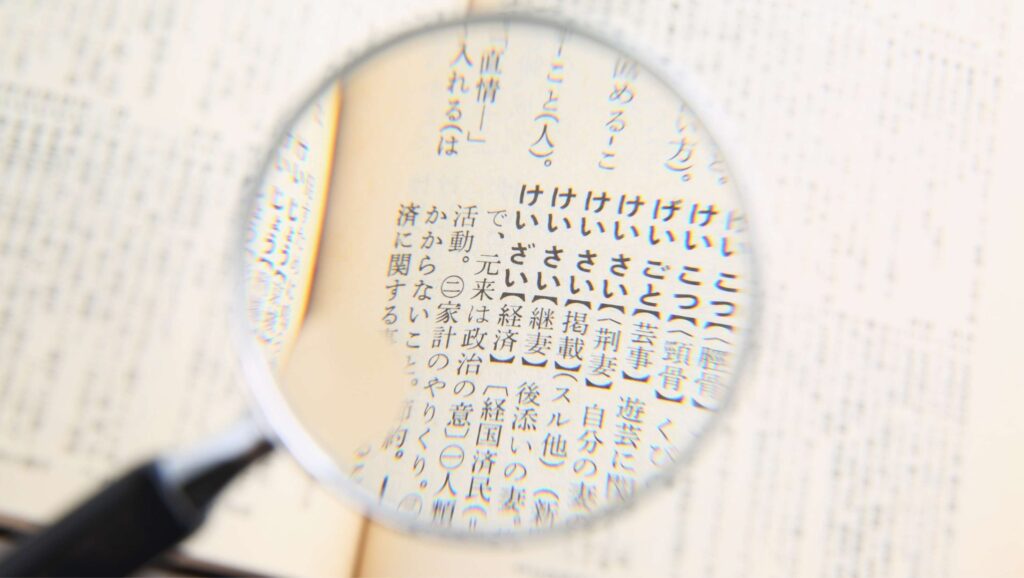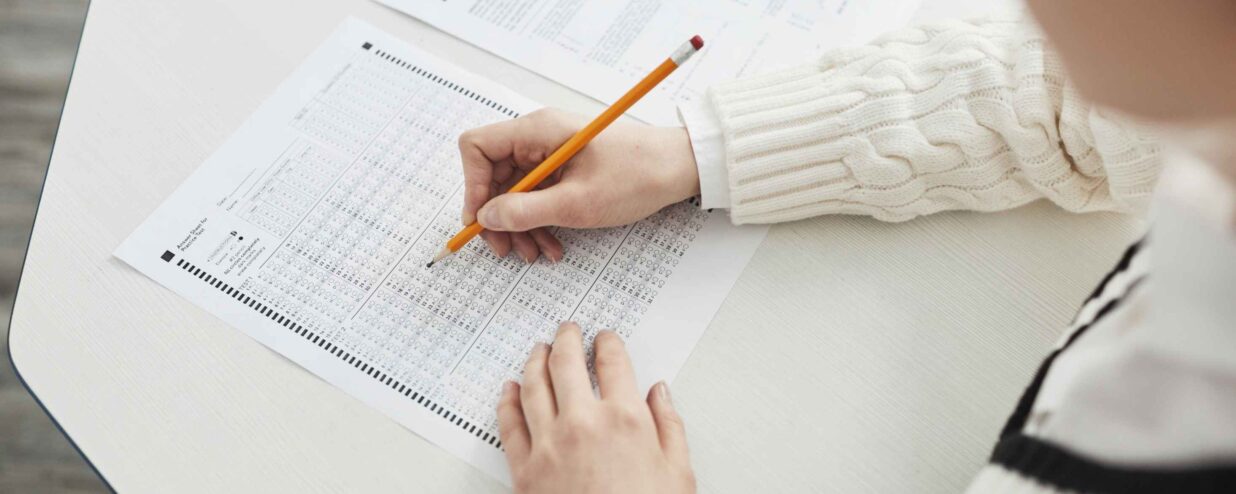Planning to study for the JLPT? Short for the Japanese Language Proficiency Test, JLPT is the most recognized Japanese language certification used by employers, universities, and immigration authorities to assess non-native speakers’ Japanese proficiency.
People say that passing the JLPT opens many doors, like landing a job in Japan and even help with your visa application for permanent residence. But with so much at stake, the JLPT can also be one of the most stressful tests to take. How long should you study? Can you even take the test where you live? In this guide, we’ll cover everything you need to know about the JLPT, from registration to preparation strategies and resources, so you can walk into the exam room ready to pass!
What is the JLPT?
The Japanese Language Proficiency Test (JLPT) is a standardized exam administered by the Japan Educational Exchanges and Services (JEES) and the Japanese Ministry of Education. It evaluates and certifies the Japanese language skills of non-native speakers across five levels, from N5 (beginner) to N1 (advanced).
The JLPT was first introduced in 1984 in response to the growing demand for a reliable Japanese language certification. In its first year, only 7,000 people took the test. By 2024, around 1.72 million people took the test worldwide!
The exam has evolved significantly over time. Back then, it was even used as a requirement for international students applying to Japanese universities. While the EJU (Examination for Japanese University Admission for International Students) has largely taken its place in academia, the JLPT remains a trusted credential for employers.
Originally held only once a year with just four levels, it now takes place twice a year (in July and December) in many countries, except in 2020, when it was canceled due to the COVID-19 pandemic.
Today, all JLPT levels use multiple-choice questions and are machine-scored to maintain fairness.
Study the JLPT Smarter with Coto Academy!
Getting ready for the JLPT? Boost your chances of passing with Coto Academy’s JLPT Prep Course — designed for busy learners. With just 3 focused hours per week, you’ll turn your current Japanese skills into real test results in 3 months.
Want to study Japanese with us?
What are the JLPT levels?

There are five JLPT levels, each designed to measure different stages of Japanese language proficiency.
The beginner levels, N5 and N4, focus on building a solid foundation in basic Japanese. N3 serves as a bridge between beginner and advanced skills, demonstrating the ability to handle everyday conversations comfortably. N2 is often considered business-level Japanese and is the minimum requirement for many companies hiring foreign workers. Finally, N1 represents full fluency of the language.
Here’s an overview of how many kanji and vocabulary words you’ll need to know for each JLPT level:
| JLPT Level | Approximate Kanji to Know | Approximate Vocabulary to Know |
| N5 | 100 | 800 |
| N4 | 300 | 1,500 |
| N3 | 650 | 3,750 |
| N2 | 1,000 | 6,000 |
| N1 | 2,000+ | 10,000+ |
Below is a detailed explanation of each level to help you decide which JLPT exam best suits your current skills and goals:
1. JLPT N5
The JLPT N5 is the most basic level, designed to test fundamental Japanese language skills. It is roughly equivalent to A1 on the Common European Framework of Reference for Languages (CEFR). This level evaluates your ability to understand and use simple phrases and everyday expressions written in hiragana, katakana, and basic kanji.
At this point, you can prove that you can greet people, but you can’t express your opinion yet.
While N5 alone may not open many job opportunities, it serves as a valuable goal for beginners!
Read More: Ultimate Guide to Taking JLPT N5
2. JLPT N4
The JLPT N4 shows that you can handle basic Japanese used in daily life, including reading simple passages and understanding common conversations. It corresponds approximately to A2-B1 on the CEFR.
Passing the JLPT N4 is usually manageable for those who have already cleared N5. However, N4 requires knowing about 200 additional kanji and roughly 700 more vocabulary words compared to the N5 level.
Read More: Ultimate Guide to Passing JLPT N4
Make sure to watch our YouTube video, where Nami-sensei teaches you how to use one of JLPT N3 grammar, dake (だけ)!
3. JLPT N3
JLPT N3 is the intermediate level of the Japanese Language Proficiency Test, sitting right between the beginner (5 or N4) and advanced (N2 and N1) tiers. It’s designed to test your ability to understand everyday Japanese used in a range of familiar situations.
At this level, you’re expected to have a solid grasp of grammar, a growing vocabulary, and the ability to read slightly more complex texts.
For many learners, N3 is an achievable milestone. It shows that you can handle daily conversations, understand basic news headlines, and navigate typical communication in a Japanese environment without much difficulty.
Professionally, JLPT N3 is often the minimum requirement for part-time jobs in Japan and may also be accepted for technical roles in global companies where some Japanese ability is helpful but not strictly essential, such as in IT or engineering teams.
Read More: Ultimate Guide to Taking JLPT N3 and the Complete JLPT N3 Vocabulary
4. JLPT N2
The JLPT N2 demonstrates advanced intermediate proficiency. At this level, you are expected to understand Japanese used in a wide variety of contexts, such as newspapers, TV shows, lectures, and business conversations.
N2 is often regarded as the benchmark for business-level Japanese. Although N2 is the threshold for fluency, more companies are relaxing their standards for Japanese fluency to the N3 level.
It is approximately equivalent to B2 on the CEFR.
Read More: Ultimate Guide to Taking JLPT N2
5. JLPT N1
The JLPT N1 is the highest and most challenging level, indicating near-native fluency. It covers about 2,000 kanji and 10,000 vocabulary words. N1 tests your ability to comprehend complex texts such as academic articles, editorials, and detailed reports, as well as to follow nuanced conversations on specialized topics.
Although N1 is the highest JLPT level, learners can further challenge themselves by taking the Business Japanese Proficiency Test (BJT). Unlike the JLPT, which focuses on general language proficiency, the BJT is designed to objectively measure practical communication skills in a Japanese business environment.
Read More: Ultimate Guide to Taking JLPT N1
What is the structure of JLPT?

The JLPT measures your language skills across four main areas: vocabulary, grammar, reading, and listening. Each section is timed, and the structure varies slightly depending on the test level.
For JLPT N5 to N3, the exam is split into three sections:
- Vocabulary
- Grammar and Reading
- Listening
For JLPT N2 and N1, vocabulary, grammar, and reading are merged into one section, making time management even more crucial.
Test duration by level
| Level | Test Sections | Time Allotment | Total Duration |
| N1 | Vocabulary, Grammar and Reading | 110 minutes | 165 min |
| Listening | 55 minutes | ||
| N2 | Vocabulary, Grammar and Reading | 105 min | 155 min |
| Listening | 50 minutes | ||
| N3 | Vocabulary | 30 min | 140 min |
| Grammar + Reading | 70 min | ||
| Listening | 40 min | ||
| N4 | Vocabulary | 25 minutes | 115 minutes |
| Grammar + Reading | 55 minutes | ||
| Listening | 35 minutes | ||
| N5 | Vocabulary | 20 minutes | 90 minutes |
| Grammar + Reading | 40 minutes | ||
| Listening | 30 minutes |
JLPT section breakdown
1. Vocabulary (語彙)
This section tests your knowledge of Japanese words and kanji readings. You’ll need to recognize vocabulary in different formats, such as:
- Kanji reading: Select the correct reading of the underlined kanji.
- Orthography: Choose the correct kanji for a word written in hiragana.
- Word formation: Complete compound words or expressions.
- Paraphrasing: Pick a synonym or phrase with a similar meaning.
- Usage and expressions: Choose the sentence where a word is used correctly or complete the missing parts.
2. Grammar (文法)
Though the dedicated grammar test section in JLPT is short, remember that the level-appropriate grammar is also embedded across other sections like reading and vocabulary. You may encounter:
- Grammar fill-in-the-blank: Choose the appropriate grammar form or phrases.
- Sentence order: Rearrange jumbled parts into a grammatically correct sentence.
- Phrase completion: Select the best phrase to complete a sentence naturally.
3. Reading (読解)
The reading section is often considered one of the most difficult. You’ll read various texts and answer questions about them. The complexity increases at higher levels. Reading tasks may include:
- Passage comprehension: Understand short to long texts.
- Information retrieval: Extract key details from ads, notices, or schedules.
- Integrated comprehension: Compare two passages (only in N2 and N1).
- Thematic comprehension: Grasp the main idea of long-form texts (N2 and N1).
4. Listening (聴解)
The listening section of the JLPT tests how well you can understand spoken Japanese in real-life situations. You’ll hear short conversations, announcements, or monologues, and answer questions based on what you heard. Importantly, you only hear the audio once, and the questions appear after the audio, so active listening and memory are key.
- Appropriate Response: Choose the best reply to a short conversation or question.
- Task Comprehension: Understand what action is required based on instructions or requests.
- Key Point Comprehension: Identify the main idea or important details of the dialogue.
- Verbal Expressions: Interpret specific phrases or expressions in context.
- Integrated Comprehension: (N2/N1 only) Follow longer conversations and compare opinions or viewpoints.
Passing score for JLPT
To pass the JLPT (Japanese-Language Proficiency Test), you must pass both the overall score requirement and the minimum sectional score.
1. Overall score requirement
Each JLPT level has a different total score and passing threshold:
| JLPT Level | Total Score | Passing Score |
| N1 | 180 | 100 |
| N2 | 180 | 90 |
| N3 | 180 | 95 |
| N4 | 180 | 90 |
| N5 | 180 | 80 |
2. Minimum sectional score
Similarly, the minimum required scores for each section of the JLPT vary by level. Note that for JLPT N4 and N5, vocabulary, grammar, and reading are combined into a single section!
| JLPT Level | Vocabulary and Grammar | Reading | Listening | |||
| Total score | Passing score | Total score | Passing score | Total score | Passing score | |
| N1 | 19 | 60 | 19 | 60 | 19 | 60 |
| N2 | 19 | 60 | 19 | 60 | 19 | 60 |
| N3 | 19 | 60 | 19 | 60 | 19 | 60 |
| JLPT Level | Vocabulary, Grammar and Reading | Listening | ||
| Total score | Passing score | Total score | Passing score | |
| N4 | 120 | 38 | 19 | 60 |
| N5 | 120 | 38 | 19 | 60 |
This means even if your total score meets the passing requirement, you won’t pass the test unless you also reach the minimum score in each individual section.
For instance, in N2, you must score at least 19 points in both the combined Language Knowledge (Vocabulary/Grammar) & Reading section, and in the Listening section. You can’t rely on one strong area to make up for a weak one!
When and where can you take the JLPT?

Wondering if you can take the JLPT in your home country? The Japanese-Language Proficiency Test (JLPT) is held twice a year, typically on the first Sunday of July and December, both in Japan and at select overseas locations.
However, some countries only offer the JLPT once a year, either in July or December, so it’s important to check your local schedule.
As of 2024, the JLPT is conducted in over 96 countries and regions. That means if you live in or near a major city, there’s a good chance a test center is available nearby. You can check the official JLPT site for the list of overseas test sites.
How many hours does it take to study for JLPT?
The number of study hours needed to pass the JLPT can vary widely depending on the learner. If you’re living in Japan or regularly exposed to Japanese, especially kanji, you may progress more quickly.
Learners with a background in Chinese or other kanji-based languages also tend to pick things up faster due to their familiarity with the writing system.
| Exam level | Hours needed to study | |
| With kanji knowledge | Without kanji knowledge | |
| N5 | 350 hours | 400 – 500 hours |
| N4 | 550 hours | 800 – 1,000 hours |
| N3 | 900 hours | 1325 hours |
| N2 | 1500 hours | 2200 hours |
| N1 | 2150 hours | 3900 – 4500 hours |
Take a look at the table below for a rough estimate of how many hours you might need to spend studying for each JLPT level!
| JLPT Level | Estimated Study Duration (1–2 hours/day) |
| N5 | 4 to 6 months |
| N4 | 7 to 9 months |
| N3 | 10 to 12 months |
| N2 | 14 to 18 months |
| N1 | 20 to 24+ months |
If you study for 1–2 hours a day, you can expect to reach JLPT N5 or N4 in about 6 to 9 months. Advancing to N2 or N1, however, might take 2 to 3 years of consistent effort. Keep in mind that even some long-time learners haven’t reached N1!
You can read our more thorough breakdown of how many hours it takes to study for the JLPT!
How to study for the JLPT?
The best way to prepare for the JLPT combines multiple strategies: taking mock exams, joining a prep course, using varied study materials, immersing yourself in Japanese media, and, most importantly, being consistent.
Everyone learns differently, so there’s no single approach that works for everyone. The key is to find a routine that fits your goals and stick to it. Here’s how to get started:
1. Set up a study schedule
If you’re serious about passing the JLPT, especially with a high score, you need a realistic and consistent study plan. Design a daily or weekly schedule that includes time for vocabulary, grammar, reading, and listening.
For example:
- Learn 10–20 new vocabulary words and kanji each day.
- Dedicate one day a week to reading practice or mock test review.
- Review previous content regularly to reinforce memory.
You never want to cram your JLPT exam preparation, especially for higher levels.
2. Take mock exams
Practice exams help you get familiar with the JLPT format and time constraints. Simulating real test conditions helps reduce anxiety and improves time management. It also reveals your weak points so you can focus your efforts more efficiently.
Pro tip: For N2 and N1, where reading, vocabulary, and grammar are combined into one long section, poor time management can cost you the entire reading section. Practice under timed conditions to develop your pacing.
3. Join a JLPT prep course
While it’s entirely possible to prepare for the JLPT on your own, many learners find that structured guidance and support make a huge difference.
Joining a course like the JLPT prep course at Coto Academy gives you access to expert teachers, well-organized lessons, and high-quality study materials. Plus, you’ll be surrounded by classmates who share your goal, creating a motivating and encouraging environment.
Coto Academy’s JLPT courses cover everything you need to succeed, from essential grammar and vocabulary to kanji and exam strategies. Whether you prefer a focused three-month intensive program or a year-round course, we offer options for all JLPT levels!
3. Gather study materials
To effectively prepare for the JLPT, it’s essential to use a mix of study tools. Combining different resources helps reinforce your skills in kanji, vocabulary, grammar, reading, and listening, and keeps your study sessions more engaging.
- Textbooks: JLPT-specific textbooks like the Shin Kanzen Master or TRY! series are great for targeted practice in grammar, vocabulary, and reading. We’ve curated a list of the best JLPT textbooks to help you choose the right one.
- Online Resources & Apps: Make use of websites, mobile apps, and online platforms designed for JLPT learners. Need recommendations? Check out our blog on the best Japanese learning apps.
- Flashcards: Flashcards are great for memorizing vocabulary and kanji. Tools like Anki, which use spaced repetition, can make your study more efficient. We’ve also created a guide to help you get started with Anki and listed our favorite Japanese decks.
4. Read newspapers and watch the news
This is especially helpful for JLPT N2 and N1 learners, where the reading section becomes more advanced. Anime can help you learn Japanese, but it might not be able to prepare you for JLPT N1.
Instead, you can switch to content that uses more formal and natural Japanese, like:
- Japanese news (NHK, ANN on YouTube)
- Newspapers and articles
- TV shows that require concentration
Keep a dictionary handy and look up unfamiliar words as you read or listen. The more you expose yourself to real-world Japanese, the more comfortable you’ll become with kanji, grammar patterns, and idiomatic expressions.

Best JLPT textbooks
There are many great textbooks you can buy to prepare for the JLPT, ranging from those that cover a lot of test elements to specialized ones that cover only vocabulary.
Some of our top recommendations include:
1. Genki
Best for: Beginners (N5 – N4)
If you’re enrolled in a Japanese language class, chances are you’ll be using either Genki or Minna no Nihongo. Both offer a solid foundation in grammar, vocabulary, and kanji through clear explanations.
While it doesn’t specifically target JLPT N5 or N4, its content closely aligns with what you’ll need to pass those levels.
2. Minna no Nihongo
Best for: Beginners (N5 – N4)
Another go-to for beginners, Minna no Nihongo is used by a lot of language schools in Japan. It’s more grammar-focused than Genki and written mostly in Japanese, which really helps with immersion.
It does come with a translation and grammar guide in your language, so you won’t get lost.
3. Try! Japanese Language Proficiency Test
Best for: All levels
The Try! series is a favorite among JLPT test-takers because it’s made specifically for each JLPT level. It walks you through grammar with clear explanations, real-life example sentences, and practice questions that feel just like the actual test.
What’s great is how it breaks things down into three simple steps: first, you see how grammar is used in real conversations, then you get to practice the basics, and finally, you apply what you’ve learned through listening and reading exercises. Each book also comes with an audio CD and a separate answer booklet!
4. Shin Kanzen Master
Best for: Intermediate to advanced (N3 – N1)
The Shin Kanzen Master series is one of the most thorough JLPT prep resources out there for serious learners aiming for a high score on N2 or N1.
Each book focuses on a specific section of the test: grammar, vocabulary, reading, or listening, and goes into impressive detail. The vocabulary book, for example, is split into two parts: the first helps you learn words based on themes and everyday situations, while the second breaks them down by part of speech and usage.
There’s also a mock test section so you can get a feel for the real exam.
5. Tango Vocabulary Series
Best for: Vocabulary practice for all levels
This compact, almost pocket-sized vocabulary book comes with a red plastic sheet that lets you hide the Japanese vocabulary for self-review.
Each book is tailored to a specific JLPT level and organizes vocabulary by theme, like hobbies, family, and adverbs. It’s especially great for building a daily study habit and perfect for learners who want quick, portable practice sessions on the go.
6. Nihongo So Matome
Best for: N3–N1 prep with lighter content
This series is designed to be completed in a short time (around 6 weeks per book). It’s great for learners who prefer visual aids and concise explanations. It’s not as in-depth as Shin Kanzen Master, but it’s great for reinforcing key concepts efficiently.
Of course, there are other great textbooks! We’ve made a full coverage of the best JLPT textbooks you can get based on each level:
- Best JLPT Textbooks for N5
- Best JLPT Textbooks for N4
- Best JLPT Textbooks for N3
- Best JLPT Textbooks for N2
- Best JLPT Textbooks for N1
How to register for the JLPT
If you’re planning to take the Japanese Language Proficiency Test (JLPT), it’s important to know when and how to register. The registration period opens a few months before the exam date, but the exact timing depends on where you plan to take the test.
In Japan:
- For the July exam, registration usually opens around mid-March.
- For the December exam, registration starts around mid-August.
Outside Japan:
- For the July exam, registration is typically open from March to April.
- For the December exam, registration usually runs from August to September.
Since these dates can vary by location, the best way to stay updated is visiting the official JLPT website.
How to register for the JLPT:
- Create a MyJLPT account: This online account is your portal to managing your test registration and viewing your results later on.
- Complete the online application: Fill out your personal details, choose your test level, and select your test location.
- Make your payment: Test fees are generally around 5,500 yen but can vary by country and test center. Your registration isn’t complete until payment is confirmed.
Test seats can fill up fast, especially in popular locations. Make sure to register as soon as the application window opens to secure your spot.
Find Out More: How to Register for The JLPT
How to find your test results
Your JLPT results will be available online approximately two months after your test date. You can check them by logging into your MyJLPT account, where you’ll get instant access to your scores.
For those residing in Japan, the official physical certificate will be mailed to your registered address on a scheduled date. Once you receive it, you can also request an official transcript, which can be sent out right away.
If you need your results urgently, you may apply for express delivery of your transcript.
Want a detailed, step-by-step breakdown? Check out our full blog post on how to view your JLPT results!
Find Out More: How to Find Your JLPT Test Results

Tips for taking the test
We already have a dedicated blog post with practical tips for test day (check it out!), but here are some essential reminders to keep in mind before and during the exam:
1. Bring an analog watch
Sometimes the wall clock is behind you or in a hard-to-see spot. Having your own watch helps you manage time without looking suspicious. Just make sure it’s not a smartwatch, as those are strictly prohibited.
2. Pack extra supplies
Bring multiple sharpened pencils and an extra eraser — better safe than sorry! You don’t want to be stuck with a broken pencil halfway through a timed section.
3. Answer every question
There’s no penalty for wrong answers, so make sure you fill in something for every question, especially if time is running out. Guessing is better than leaving anything blank — you’ve got nothing to lose!
4. Arrive early
It might sound obvious, but make sure to get to the test center at least 30–45 minutes before the exam starts. This buffer time allows you to check in, find your seat, and mentally prepare without feeling rushed. It’s also a great time to visit the restroom — while there are breaks between test sections, you can expect long lines, so going beforehand can save you unnecessary stress.
Read More: 10 JLPT Tips for The Actual Test Day
Plan to take the JLPT? Join a JLPT prep Course at Coto Academy!
Preparing for the JLPT on your own can be challenging. With Coto Academy’s online and in-person JLPT prep courses, you’ll do more than just pass — you’ll unlock your full potential, reach your target score, and go beyond.
Our expert instructors guide you through all test sections, with classes available in Tokyo and online. You can choose between a 3-month intensive course or take more structured, year-round lessons. Ready to get started? Contact us today for a Japanese-level assessment and a free consultation to find the perfect course for you!
Want to study JLPT with us?
Don’t believe us? See our past JLPT success rate story. Love our content and want more free resources on JLPT grammar and vocabulary? Don’t forget to subscribe to our YouTube channel, where we share new learning materials every week.
What is the JLPT?
The Japanese-Language Proficiency Test (JLPT) is a standardized exam that measures and certifies your Japanese language ability. It has five levels: N5 (beginner) to N1 (advanced).
When is the JLPT held?
The JLPT is offered twice a year, typically in July and December. In some countries, it may only be available once a year, so check the official JLPT website or your local test center.
Where can I take the JLPT?
The JLPT is administered in over 90 countries and regions worldwide. Most major cities have test centers. You can find the full list of test locations on the official JLPT website.
How much does the JLPT cost?
The test fee is generally around 5,500 yen (approximately $50 USD), but fees may vary depending on the country or test site.
What is the passing score for the JLPT?
Passing requires meeting both the overall score and minimum sectional score requirements. Each level has different passing criteria, but generally, you need around 60% overall and a minimum score in each section.
Can I take the JLPT multiple times?
Yes, you can take the JLPT as many times as you want. Many learners retake the exam to improve their scores or advance to higher levels.
Can I pass JLPT N5 in 3 months?
If you study intensively and daily, you might be able to pass JLPT N5 within 3 – 6 months.
